Share the post "Curve a Soccer Ball – Bend It Like The Pros"
If you’re looking to take your soccer game to the next level, mastering the art of curving the ball can be a game-changer. With the ability to add precision and power to your passes and shots, knowing how to curve the ball can make all the difference on the field.
In this article, we’ll explore the ins and outs of curving the ball, from understanding the curve in soccer to curving the ball with your instep. We’ll also delve into the importance of body positioning and the role of follow-through, as well as the benefits of curved passes. Finally, we’ll take a look at how to apply the curve in different situations and steps to bend the ball like the pros.
Video version of how to curve a soccer ball:
Key Takeaways
- Curving the ball can add precision and power to your passes and shots, making it a valuable skill to master.
- Proper body positioning and follow-through are key to successfully curving the ball with your instep.
- Curved passes can be effective in a variety of situations, from crossing the ball behind a backline to creating a more precise shot on goal.
Understanding Curve in Soccer
When making a pass or cross in soccer, a totally vertical trajectory of the ball isn’t always enough. The opposition’s defensive line may be too high, or you may be too wide, or the opportunity you generate may be enhanced by adding curve to your pass or cross or making the placement of your shot more precise, keeping the ball out of the goalkeeper’s reach and giving you a higher chance of scoring.
A curve is when you kick the ball in such a way that the movement of the ball resembles more of a bend. Curving a soccer ball with the instep of your boot is the most common method, but you can also utilize the outstep.
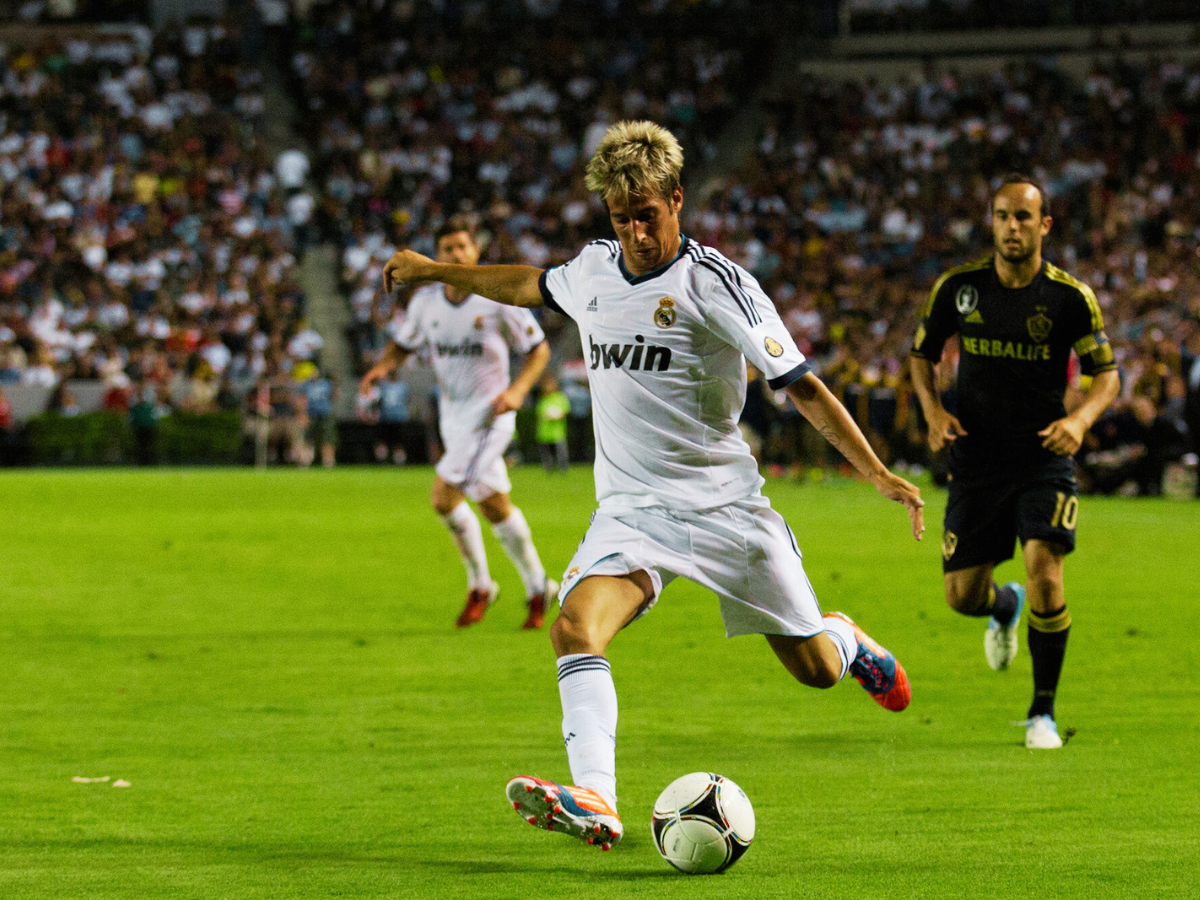
Positioning
Before you strike the ball, you want to make sure that your body positioning is correct. Make sure that your standing foot is planted close enough to the ball that you don’t have to overstretch in order to connect with the ball, but not too close that the power you can generate is inhibited. You then want to contact the ball with the area of your foot right before your big toe, around the arch on your in-step, with the hard bone known as your metatarsal.
Connection
Imagine there’s a line around the middle of the ball. You want to make contact with the ball just under that line, which will give the ball an upward, curving movement. If you connect above the middle of the ball, you won’t get any height on your shot or cross, which probably isn’t what you want. As you connect with the ball, you want to lock your ankle and point your toes upwards, which will give you a greater connection with the ball, creating more bend.
Follow-Through
It’s not just about how you connect with the ball but also about your follow-through, as this will determine how much power and height you’re able to generate with your pass, cross, or shot. As you connect with the ball, you need to swing your hip around in a sweeping circular motion to create the spin. If you also lean your torso a little bit over the ball as you shoot, this should stop you from getting too much height on the ball.
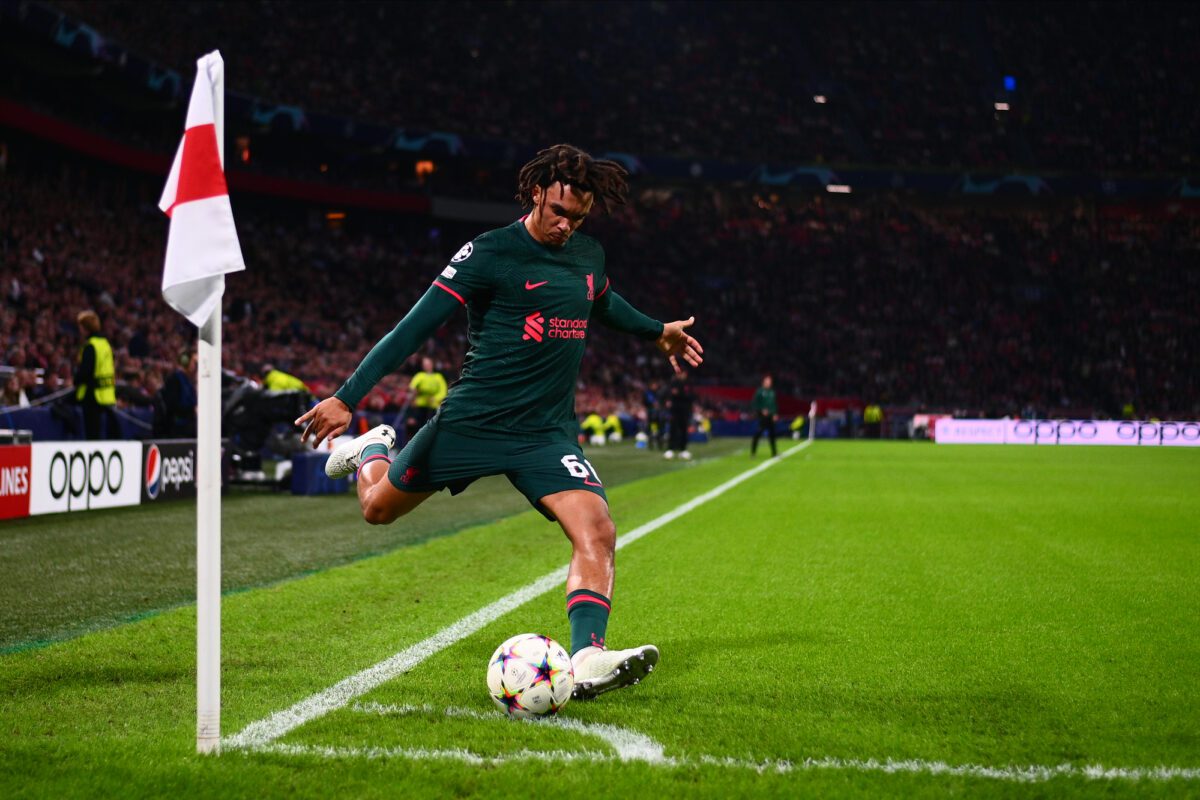
Benefits of Curved Passes
In soccer, curved passes can be a valuable weapon in an attacking team’s toolbox, providing a variety of tactical benefits. The following are some of the main advantages of curved passes:
- Bypassing Defenders: A curved pass’s ability to get past defenders is one of its main advantages. Despite obstructed direct passing lanes, players can still find teammates in opportune situations by bending the ball around opponents.
- Unpredictability: Compared to straight passes, curve passes are less predictable. This unpredictable nature has the capacity to take other teams off guard, giving the attacking side chances to take advantage of gaps in the defense.
- Possibilities for Scoring: A skillfully performed curved pass can veer beyond the defensive line and into the path of a striker or winger, creating openings for possible scoring. This works especially well when delivering the ball into the penalty area from a free kick or when crossing from the flanks.
- Improving Crosses: In broad areas, defenders and goalkeepers may find it challenging to predict the trajectory of a curving pass, also known as a cross, which delivers the ball into the box. This may result in headers or volleys that provide scoring opportunities.
- Enhancing Receivers’ Angle and Space: Curved passes have the ability to quickly alter the angle of attack. Rather than a straight pass that could be intercepted or result in a contested possession, a ball that is curved into a player’s path allows them to receive it in stride and in more space.
- Encouraging Possession action: Curved passes can be utilized to keep possession in a possession-based game by moving the action across the field. By spreading out the opposition’s defense, these passes can give you more room to maneuver.
- Helping with Set-Pieces: Curved balls can be placed tactically to avoid the initial line of defense and drop the ball into risky locations where attackers can capitalize during set-pieces like corners and free-kicks.
- Appropriate for Various Field Types: Curved passes enable players to make better use of the pitch’s width on smaller or narrower fields.
- Psychological Impact: When a curved pass is consistently successful, it can demoralize the other team by making it difficult for them to intercept or predict where the ball will go.
- Improving Individual Skill Reputation: Players who become proficient in curved passing are frequently held in high esteem for their abilities, which can help them gain more self-assurance and a positive reputation on the field.
Curved passes are more than simply a demonstration of technical mastery; they are a useful and strategic instrument that may disrupt defensive formations, create a variety of offensive opportunities, and improve a team’s overall performance.
How Players Use Curve
Trent Alexander Arnold
There are different types of curved passes or crosses, such as the one Trent Alexander Arnold used in the Premier League. He was able to bend the ball around the center back and only put it into the path of Salah to control and potentially have a one-on-one. By using the curling technique from this position, it also slowed down the actual pace of the ball, giving Salah a better opportunity to reach and control the pass.
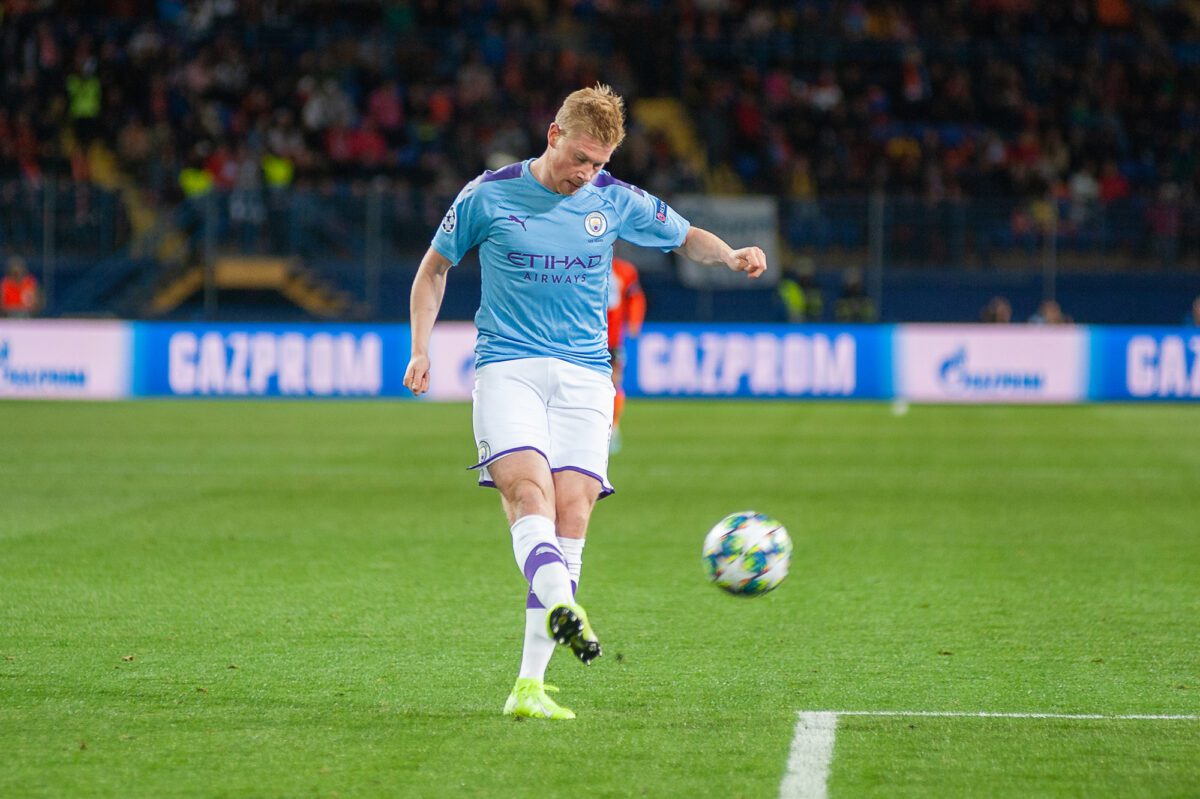
Kevin De Bruyne
Another example is Kevin De Bruyne’s cross, where he put a lot more curl on the ball because the crossing behind the back line had to be a lot more horizontal, which required him to be very precise with his cross looking to pick out either Sergio Aguero in the middle of the box or Raheem Sterling, who’s attacking the back post.
Another curve example is the Trivela technique, which is harder to master but may be even more effective if performed correctly. This technique is called curling the ball with the instep of your foot. Instead, you use the outside of your boot, allowing you to perform the same curling pass from both sides, even with your weaker foot.
Mastering the curve in soccer can give you an edge over the opposition, allowing you to create better chances and score more goals. With practice and precision, you can perfect your technique and become a master of the curve.
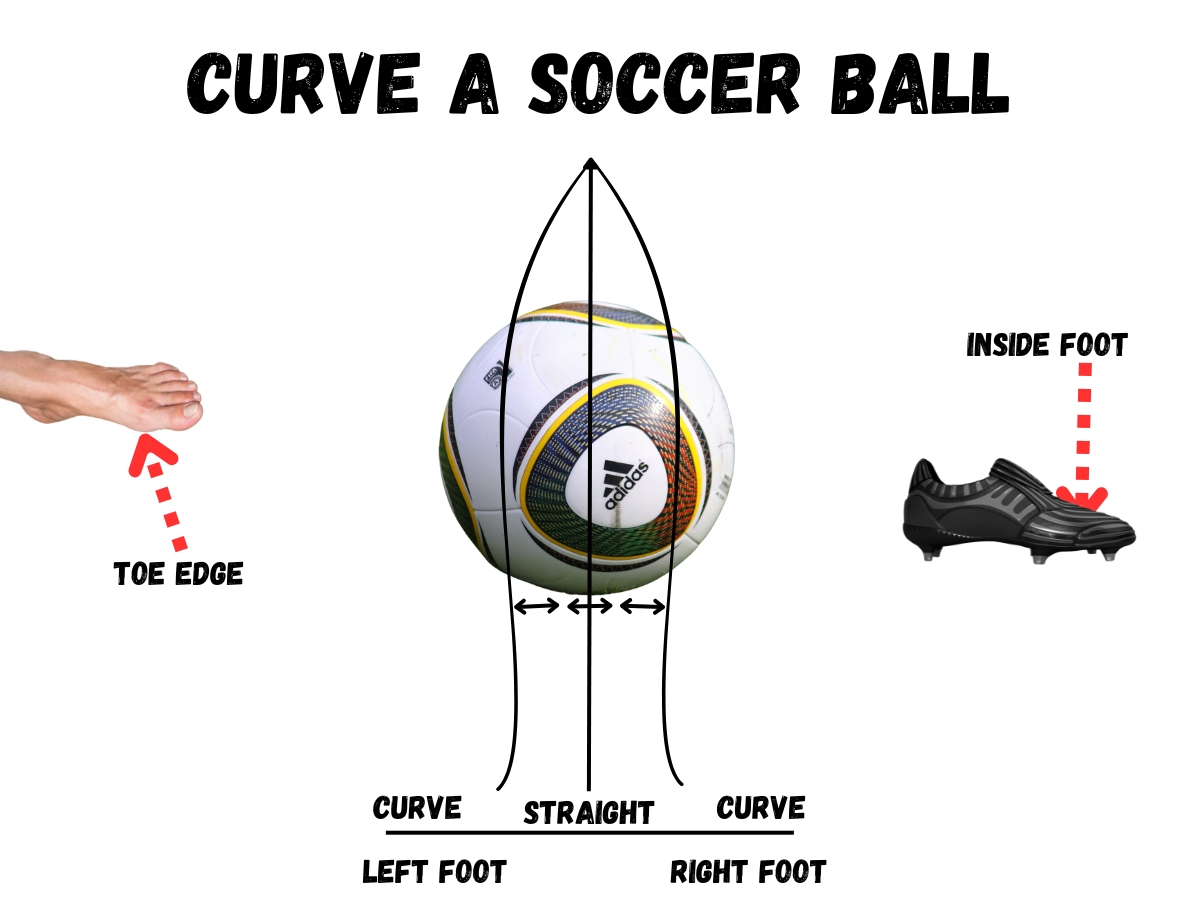
Steps To Curving the Ball
If you want to add some curve to your pass or cross, using the instep of your boot is the most common way to do it. Here’s how you curve a soccer ball step by step:
- Choose the Right Ball and Footwear: A good soccer ball and cleats may make a big impact. The ball should be well-inflated, and the cleats should provide adequate grip and feel.
- Positioning the Ball: Position the ball so that the valve (if visible) is facing up. This can occasionally aid in obtaining a cleaner strike.
- Approach and Stance: The way you approach the ball is critical. Begin by taking a few steps back from the ball. Your standing foot should be 6-12 inches away from the ball and pointed in the direction you want it to go.
- Striking the Ball: You must strike the ball off-center to curve it. Strike the ball slightly to the left of center with the inside of your foot if you’re a right-footed player curving the ball to the right. Use the outside of your foot to strike the ball to the right of center for a left curve.
- Follow-Through: Just as crucial as the stroke itself is the follow-through. After striking the ball, keep your kicking foot moving in the direction you want the ball to curve. Wrap your foot around the ball as you follow through for an inside curve (right foot, left curve or left foot, right curve). Slice across the ball for an outward curve (right foot, right curve or left foot, left curve).
- Spin: Swing your hip around in a sweeping circular motion to create the spin. If you also lean your body slightly over the ball as you shoot, this should stop you from getting too high on the ball. If you lean back too far, there’s a good chance that you may gain too much height and overhit the ball.
- Locked: Lock your ankle and point your toes upwards as you connect with the ball. This will give you a greater connection with the ball, creating more bend.
- Body Movement: To keep the shot low, you should bend over the ball. Lean back somewhat as you strike higher curves – don’t lean to far or the ball will be ‘skied’.
- Mastering practice: Begin by practicing at a limited distance and progressively increase it as you gain confidence in the skill.
- Curving strategies: Use curving strategies in a variety of game circumstances. Curving the ball around a wall on a free kick, for example, or into the path of a teammate during open play
Remember that the combination of the point of impact, the action of your foot, and the follow-through is the key to bending a soccer ball. Each player’s technique may change slightly, so it’s critical to practice and figure out what works best for you. It’s not just about how you connect with the ball; it’s also about your follow-through. This will determine how much power and height you’re able to generate with your pass, cross, or shot.
With the proper technique, you can achieve a curve that will make your passes and crosses more effective, just like Trent Alexander Arnold and Kevin De Bruyne have done in the Premier League.
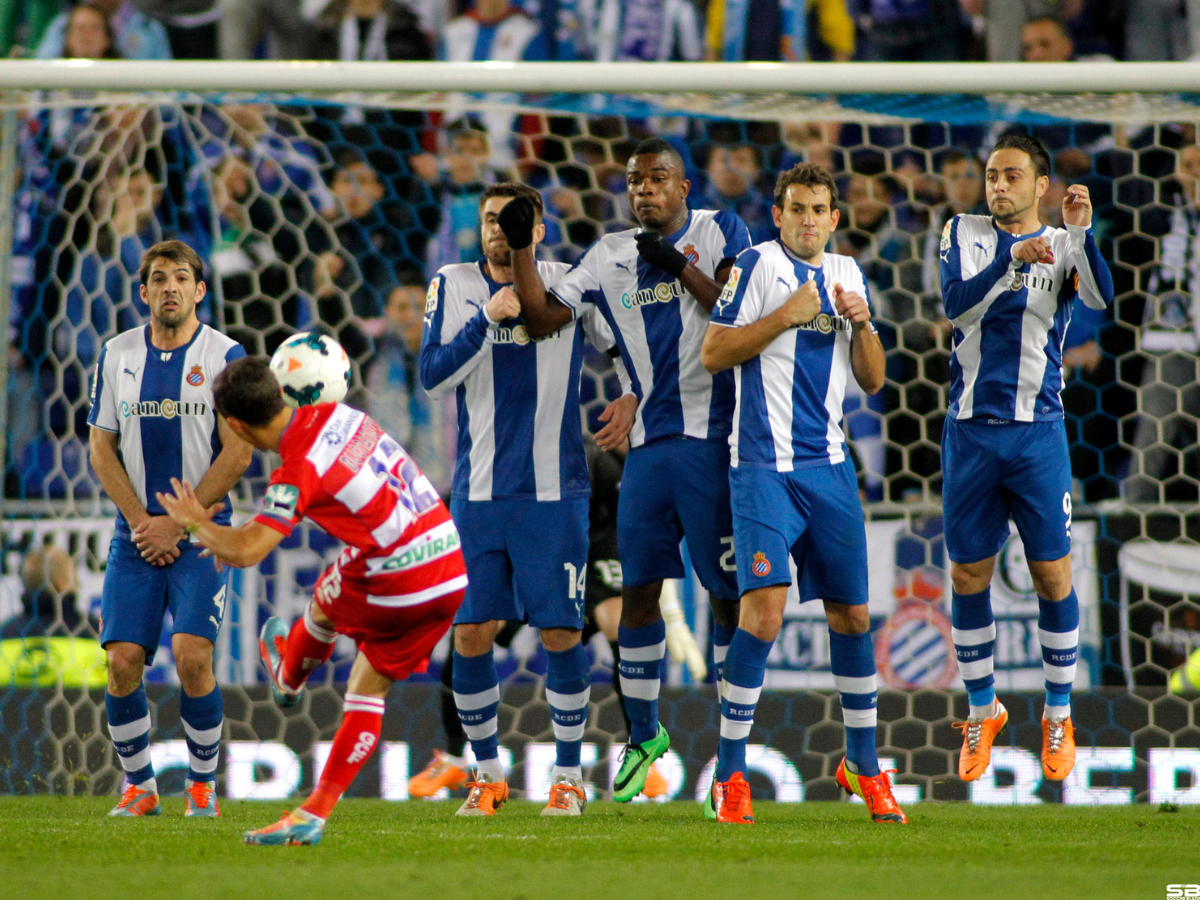
Importance of Body Positioning
When curving a soccer ball, your body positioning is critical to the success of your shoot, pass, or cross. Before striking the ball, make sure your standing foot is close enough to it to easily come into contact with it, but not so close that it limits the power you can generate. This is a personal preference that you will discover with time and experience.
You want to use the part of your foot directly before your big toe, around the arch of your instep, known as your metatarsal, when you contact with the ball. To give the ball an upward, curving movement, make contact with it right under the middle line. You won’t get any height on your shot or cross if you connect over the middle line, which isn’t ideal unless you’re looking for a ground pass.
When you contact with the ball, lock your ankle and point your toes upwards to create a stronger connection and more bend. However, your follow-through dictates how much force and height you can generate with your pass, cross, or shoot, not just how you connect with the ball.
To create spin, swing your hip around in a sweeping circular motion when you come into contact with the ball. If you bend your torso slightly over the ball when you shoot, you should avoid obtaining too much height on the ball. Leaning back too far may result in you acquiring too much height and overhitting the ball.
When it comes to curving a soccer ball, your body alignment is critical. Keeping your standing foot in the proper posture, connecting with the ball with the correct area of your foot, and following through with a sweeping circular motion can help you attain the desired curvature. You may perfect the skill and use it to your advantage in games with practice.
Role of Follow Through
When curving a soccer ball, it’s not just about how you connect with the ball but also about your follow-through. The follow-through determines how much power and height you can generate with your pass, cross, or shot. Here are some key points to keep in mind:
- Swing your hip around in a sweeping circular motion to create the spin.
- Lean your torso slightly over the ball as you shoot to prevent getting too much height on the ball.
- Lock your ankle and point your toes upwards for a greater connection with the ball, creating more bend.
- Kick the ball just under the middle line to give it an upward, curving movement.
- If you connect above the middle line, you won’t get any height on your shot or cross.
By mastering the follow-through, you can achieve the desired curve and precision in your passes, crosses, and shots. It’s a skill that requires practice and patience, but the results can be game-changing.
Professional players like Trent Alexander-Arnold, Bernardo Silva, Kevin De Bruyne, and J. Canelo have shown that a well-executed curved pass or cross can create scoring opportunities and outmaneuver the opposition’s defense. Whether you prefer using the instep or the outstep, the follow-through is a crucial element in your technique.

Advanced Curve: Trivela
Curving a soccer ball with the instep of your boot is most prevalent. The Trivela is a harder talent to learn but more effective if done correctly. The Trivela curls the ball like the instep, but you use the outside of your boot. This lets you curl from both sides, even with your stronger foot.
To execute the Trivela, position your body correctly before striking the ball. Your standing foot should be close enough to the ball to connect without overstretching, but not too close to limit your power. You should smash the ball with the outside of your boot, slightly below the center to the left. This curves the ball upward. Keep your ankles locked and your toes pointed up to bend.
Following through is equally vital with the Trivela as with the instep method. To spin, swing your hip in a circular motion when you hit the ball. Leaning your torso over the ball when shooting should prevent you from getting too high. Learning the Trivela takes practice, but it’s a vital talent. This move lets you curl a pass around a defender with your weaker foot.
In conclusion, the Trivela is tougher to learn but more successful than the in-step technique when done correctly. Even with your stronger foot, you curl from both sides using the outside of your boot. Focus on body alignment, contact point, and follow-through when performing this technique. For an in-depth guide on the Trivela, see this article.
Share the post "Curve a Soccer Ball – Bend It Like The Pros"
Joel is a seasoned soccer journalist and analyst with many years of experience in the field. Joel specializes in game analysis, player profiles, transfer news, and has a keen eye for the tactical nuances of the game. He played at various levels in the game and coached teams - he is happy to share his insight with you.



